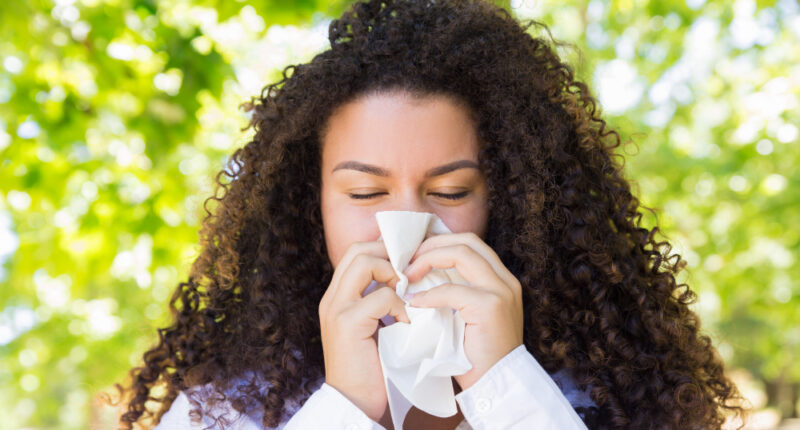Seasonal allergies are a common health issue that affects millions of people worldwide. They occur when your immune system reacts to outdoor allergens like pollen, mould, or dust during specific times of the year. If you’re one of the many people who experience sneezing, itchy eyes, or congestion during certain seasons, understanding a seasonal allergy chart can help you better manage your symptoms. In this blog, we’ll explore how seasonal allergies work, the best times to watch out for triggers, and ways to relieve your symptoms.
What Are Seasonal Allergies?
Seasonal allergies, also known as hay fever or allergic rhinitis, occur when your immune system reacts to allergens in the air. These allergens may vary depending on the season. Common triggers include:
- Pollen: From trees, grasses, and weeds
- Mold spores: Found in damp environments like fallen leaves or compost
- Dust mites: Tiny organisms that thrive in warm, humid areas
For people with seasonal allergies, the immune system mistakes these substances for harmful invaders and triggers an allergic reaction. The reaction typically includes symptoms like sneezing, a runny nose, itchy eyes, and congestion.
Seasonal Allergy Chart: Know When to Expect Symptoms
Understanding the timing of seasonal allergens can help you prepare for allergy season and take preventive measures. A seasonal allergy chart breaks down the peak times for different allergens throughout the year. The following chart outlines common seasonal allergens and when they are most prevalent:
Allergen | Peak Season | Common Symptoms
Tree Pollen | Spring (March-May) | Sneezing, itchy eyes, nasal congestion
Grass Pollen | Late Spring to Summer (May-July) | Sneezing, runny nose, itchy throat
Ragweed Pollen | Late Summer to Fall (August-November) | Itchy eyes, sneezing, coughing
Mold Spores | Fall to Winter (September-November) | Nasal congestion, coughing, wheezing
Dust Mites | Year-round, worsens in humid months | Itchy eyes, sneezing, coughing
By tracking the specific allergens that affect you, you can plan accordingly to minimize exposure and reduce symptoms. For example, if tree pollen is a trigger in early spring, you can start allergy medications before the peak pollen season to reduce the severity of your symptoms.

How to Manage Seasonal Allergy Symptoms
Once you have a better understanding of when allergens are most likely to affect you, you can take proactive steps to manage your symptoms and improve your quality of life during allergy season. Here are some effective ways to manage seasonal allergies:
1. Limit Outdoor Exposure
During high pollen seasons, try to stay indoors as much as possible, especially during peak pollen hours (usually early morning and evening). If you do go outside, wear sunglasses to protect your eyes and change your clothes immediately when you return indoors.
2. Use Allergy Medications
Over-the-counter antihistamines, nasal sprays, and decongestants can provide relief from common allergy symptoms. Antihistamines block the allergic reaction in your body, while nasal sprays can help reduce inflammation in your sinuses. For more severe allergies, a doctor may prescribe stronger medications or recommend allergy shots (immunotherapy).
3. Keep Windows Closed
During allergy season, keep your windows closed to prevent pollen from entering your home. You may also want to invest in an air purifier to filter allergens from the air.
4. Regular Cleaning
Dust mites and mould are common allergens that can worsen symptoms. Regularly clean your home, especially in areas where dust and mould thrive. Wash bedding frequently in hot water and vacuum with a HEPA filter to capture dust and pollen particles.
5. Consider Natural Remedies
For those who prefer natural alternatives, certain herbs and supplements such as butterbur, quercetin, and nettle may help alleviate allergy symptoms. Always consult with your healthcare provider before starting any new treatments.
When to See a Doctor
While seasonal allergies are common and manageable, they can sometimes worsen or cause complications, such as sinus infections or asthma flare-ups. If you experience persistent symptoms despite treatment, it’s a good idea to consult a healthcare provider. An allergy test can help determine the specific allergens causing your reactions, allowing you to develop a more targeted treatment plan.
Conclusion
Understanding the timing of seasonal allergens through a seasonal allergy chart can help you stay ahead of your symptoms and enjoy a better quality of life. By knowing when allergens peak and taking steps to manage your symptoms, you can minimize the discomfort that comes with seasonal allergies. Whether you’re avoiding triggers, using medications, or seeking natural remedies, there are plenty of options available to help you breathe easier and feel better throughout the year. If your symptoms persist or worsen, don’t hesitate to seek professional medical advice to ensure the best care.









